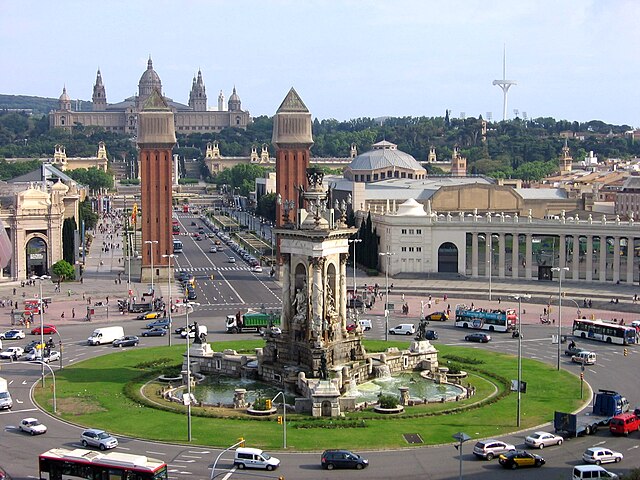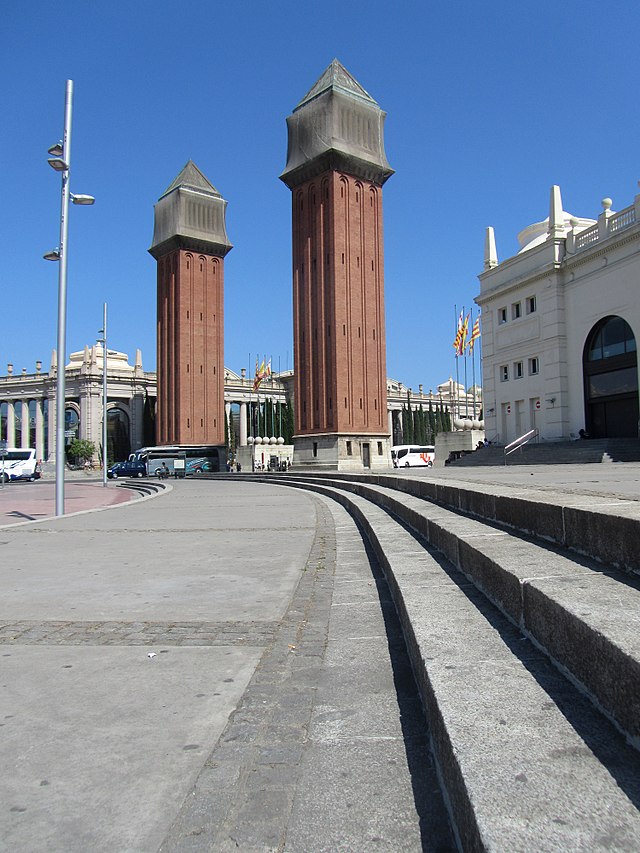Plaça d'Espanya, Barcelona
Square in Barcelona, Spain From Wikipedia, the free encyclopedia
Square in Barcelona, Spain From Wikipedia, the free encyclopedia
Plaça d'Espanya (Catalan pronunciation: [ˈplasə ðəsˈpaɲə]; English: Plaza of Spain) is one of Barcelona's most important squares, built on the occasion of the 1929 Barcelona International Exposition, held at the foot of Montjuïc, in the Sants-Montjuïc district.




One of the city's biggest squares, it is the junction of several major thoroughfares: Gran Via de les Corts Catalanes, Avinguda del Paral·lel, Carrer de la Creu Coberta and Carrer de Tarragona, and leads to the Palau Nacional through Avinguda de la Reina Maria Cristina, which houses one of Catalonia's finest museums, the Museu Nacional d'Art de Catalunya (MNAC). It was designed by Josep Amargós. The fountain at the centre of the square was designed by Josep Maria Jujol, a collaborator of Antoni Gaudí, while Miquel Blay designed the statues. The buildings were designed by Nicolau Maria Rubió i Tudurí.
The square was built on a site that had been previously used for public hangings, until the creation of the now demolished Ciutadella fortress in 1715, where the gallows were moved. It was designed in 1915 and built in 1929 so that it could be ready to host the 1929 Universal Exposition. The square has been in public use since then.
Plaça d'Espanya is also a major transport hub that serves most parts of the Metropolitan Area of Barcelona.
Seamless Wikipedia browsing. On steroids.
Every time you click a link to Wikipedia, Wiktionary or Wikiquote in your browser's search results, it will show the modern Wikiwand interface.
Wikiwand extension is a five stars, simple, with minimum permission required to keep your browsing private, safe and transparent.